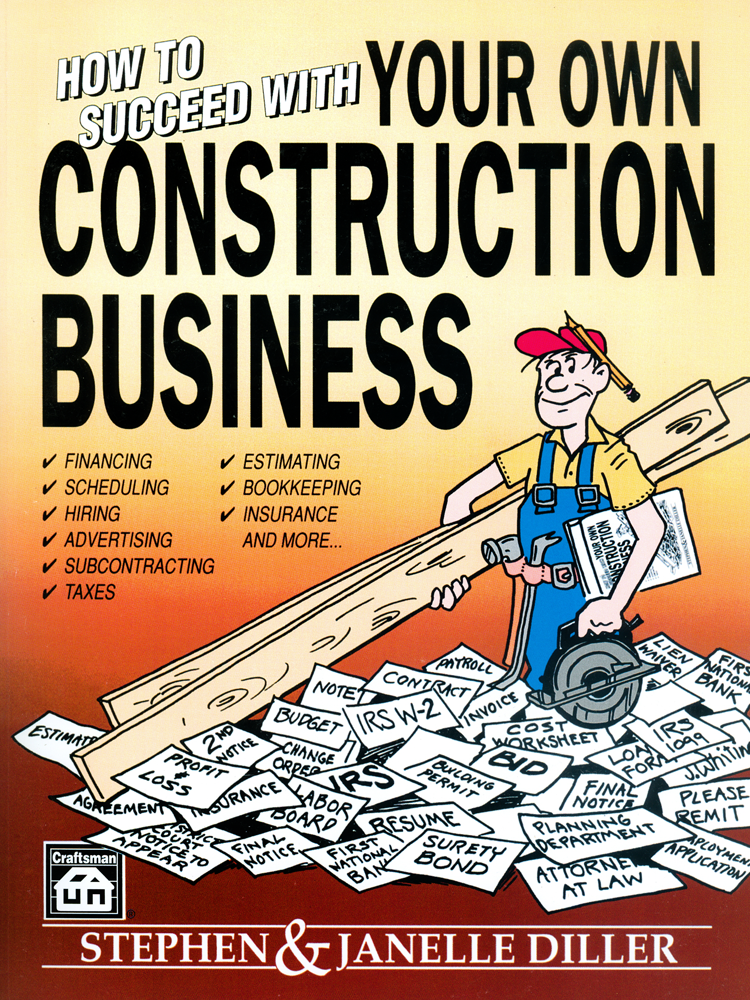State of the Industry
2024 State of the Industry: What Roofing Distributors Should Know

Information gleaned from Roofing Contractor magazine’s most recent State of the Industry report has some valuable information for roofing distributors and suppliers to further understand their customers’ needs.
— Top courtesy of Bone Dry Roofing; by Bryan Gottlieb for RSP;
article images courtesy of Wikipedia, Wikimedia and Pixlr
From what products contractors are using to the challenges they perceive as the biggest threats to their business, roofing distributors who check the roofing industry's pulse and then offer solutions to their customers succeed - and by extension, help their businesses succeed.
That supposition inspired the staff at Roofing Supply Pro to break out some of the critical insights revealed in Roofing Contractor’s annual State of the Industry report. The survey, sent to RC’s nationwide audience, provides insights into the trends, challenges and opportunities affecting roofing industry professionals.
Below are some of the findings distributors may discover most beneficial in determining how best to care for their customers as the year unfolds.
Top Product Choices
According to the survey, single-ply roofing and low-slope asphalt are contractors' most frequent product types, accounting for an average of 36% of sales revenue.
On the residential side, steep-slope asphalt shingles are the most widely used product, with 74% of primarily residential contractors offering the product, making up 32% of their overall revenue. However, the survey’s findings indicate that roofing distributors may want to ensure they have both steep-slope and low-slope asphalt products in stock for residential contractors.
Of all the various products available, this year's survey showed the second most-used product by residential contractors is low-slope asphalt, with 69% of residential respondents saying they’ve incorporated the product in their offerings. Similarly, 66% of primarily residential contractors say they install single-ply roofing.
Most commercial roofing contractors indicate single-ply roofing is the product they are most involved with, saying TPO is the most common roofing type (48%), followed by EPDM (30%). The other most-used roofing system among commercial contractors is metal.
Meddling with Metal?
 Metal roofing systems are gaining popularity in the broader industry — meaning residential — thanks to metal’s durable nature and sustainability over more common roof types. Even so, distributors should still anticipate setting aside more metal for commercial contractors over residential ones.
Metal roofing systems are gaining popularity in the broader industry — meaning residential — thanks to metal’s durable nature and sustainability over more common roof types. Even so, distributors should still anticipate setting aside more metal for commercial contractors over residential ones.
Even though more than half, 56%, of residential roofing contractors said they install metal roofing, 79% of commercial contractors say it’s a go-to option. Additionally, metal remains — overall — a fractional product for both residential and commercial contractors. Just 11% of overall sales revenue comes from metal sales for residential contractors; commercial revenue from metal isn’t much more remarkable, at just 13%.
The most popular metal type is architectural standing seam, with a third of respondents saying it’s the one they install the most, followed by roof edge and gutter systems. Metal architectural shingles are naturally more popular with residential contractors than commercial, with 16% saying they install them compared to 11% on the commercial side.
Solar Installers
 Solar has been receiving a lot of buzz over the past few years, with costs coming down, increased consumer interest in renewable energy, and new incentives thanks to government efforts like the Inflation Reduction Act. However, solar has yet to make substantive inroads within the greater roofing contractor industry.
Solar has been receiving a lot of buzz over the past few years, with costs coming down, increased consumer interest in renewable energy, and new incentives thanks to government efforts like the Inflation Reduction Act. However, solar has yet to make substantive inroads within the greater roofing contractor industry.
Only 16% of residential contractors are involved with solar products. Just over half of residential contractors expect solar sales to increase in 2024. Meanwhile, 19% of commercial contractors offer solar services, with 72% expecting sales to increase this year. Growth is always a relative term.
Tip: Distributors can help contractor customers by offering education and training on solar products offered by manufacturers. Owens Corning announced its Solar PROtect Program, which helps its top contractors leverage renewable energy with training, strategies and in-house certification known as “SolarPRO.”
“This program was developed by contractors for contractors to help grow their business in an evolving market,” said Michael Schneider, contractor program director at Owens Corning.
ABC Supply Co., Inc. has taken a proactive approach, stocking materials contractors need for renewable energy projects, including panels, racking, inverters, and batteries. The distributor’s vehicles can also deliver solar products onto the roof.
“When I first got into solar in 2009, it was mostly online distributors, not necessarily brick-and-mortars,” said Rob Smith, business development manager of Renewable Energy at ABC Supply. “There was a desperate need for brick-and-mortar distribution. With ABC having multiple verticals and being the largest building supplier in the U.S., it was only natural we got into the renewable space as well.”
Optimistic Sales Forecasts
 Despite some murky clouds among the seemingly sunny skies of construction during the next several months, a plurality of roofing contractors expect overall sales to grow over the next few years.
Despite some murky clouds among the seemingly sunny skies of construction during the next several months, a plurality of roofing contractors expect overall sales to grow over the next few years.
Of the respondents, 78% said they anticipate sales to improve in 2024. An even larger percentage (87%) predicts sales growth over the next three years. When broken down, 90% of residential contractors expect sales to slightly or greatly increase between now and 2027. Commercial contractors feel similarly, with 82% expecting sales growth in the same period.
Tackling Challenges
Aside from the self-evident role of supplying material, roofing distributors may also provide resources and solutions for pain points that affect contractors; some are beyond distribution’s control, while others are squarely in its wheelhouse.
Of the challenges cited by more than half of respondents, 59%, as affecting them most, were the current economy and inflation; increases in material costs followed second at 49%. A lack of qualified workers was a close third at 46%, then lowball pricing at 35%. Lastly — but not insignificantly — 20% cited “supply chain/material shortages” as their greatest pinch point.
A year earlier, that number was 2.5 times higher at 51%.
Labor: A Broader Tent
Finding retainable labor for contractor clients or a supplier’s needs seems difficult — unemployment remains below 4%; labor participation has not been this high since the 1950s — distributors are doubling their efforts to tap the growing Latino and Hispanic communities within the industry.
 State of the Industry survey results show that, on average, 36% of crews speak non-English languages, while only 20% of senior management speak languages other than English. Of that 36%, Spanish makes up three-quarters of the dominant language used within that subgroup daily, exceeding English by about 45%.
State of the Industry survey results show that, on average, 36% of crews speak non-English languages, while only 20% of senior management speak languages other than English. Of that 36%, Spanish makes up three-quarters of the dominant language used within that subgroup daily, exceeding English by about 45%.
Note that only 5% of survey respondents self-identified as Hispanic or Latino.
Alan Lopez, national bilingual CARE training manager at GAF, said the manufacturer has been working with suppliers to have their Latino-focused training programs to support this growing demographic.
“Partnering with distributors plays a big part of it, as they are the ones meeting and seeing these contractors,” Lopez told RSP in a 2023 interview. “If you’re going to jump into this and try to engage with the Hispanic community, it cannot just be everything you do in English translated and dump it.”
Sean McDevitt, chief human resources officer at Beacon, said it’s up to distributors to take the initiative and work on incorporating Spanish-speaking employees and programs into their operations. He noted at Beacon that it’s about making it easier to apply and having candidate vetting materials prepared in Spanish and English.
“[Distribution is] over-indexed in Latinos on all the jobs that surround us and the jobs that we need,” said McDevitt. “Right now, it’s a warehouse. If you need to hire a warehouse worker in most of the country, and if you don’t hire Spanish speakers, you’re walking away from 50-plus percent of your candidate pool, and that’s foolish.”
SRS Distribution continues to support this demographic with its Para Latinos program, which includes a busy booth dedicated to Latino and Hispanic attendees to the 2024 IRE. Dan Tinker, president and CEO of SRS Distribution, said SRS is proud of the support it provides and is glad others are doing the same.
“We couldn’t be any prouder of all of the things we’re doing to try to help that community and to bring every opportunity that every other contractor does in the industry [to them],” said Tinker. “I think a lot of people are following our lead now, which is great because [the community] deserves it, and they’re a huge demographic in this industry.”
Technology Use
Seventy percent of contractors say estimating software is the most commonly used technology in their businesses, with 70% of respondents using some version, followed by enterprise software at 68%.
 Commercial roofers are the driving force in technology use, with 76% saying they use both types of software compared to 64% of primarily residential contractors.
Commercial roofers are the driving force in technology use, with 76% saying they use both types of software compared to 64% of primarily residential contractors.
More than half, 56%, of respondents, use business process software, while 53% turn to cloud computing. Only 43% of respondents use drones, but it is also the technology that contractors are most curious about; 28% said it’s under discussion to incorporate drones into their operations within the next two years.
Another tech the statistics highlighted that is creating buzz within the industry is artificial intelligence. Just over 20% of contractors currently use it, while 26% are considering adopting it within the next two years.
AI was the focus of the first keynote presentation at the 2024 International Roofing Expo, with presenter Josey Parks, CEO of Total Home Roofing and J. Wales Enterprises, saying it’s leading a “Fourth Industrial Revolution.”
“I want to tell everyone how to use technology and really teach people how to leverage it for good,” Parks said, adding later in his talk, “I've been looking at it for many years, and it's just blown my mind what's coming, smart cities with fiber optics and … the speed of information.”
Looking for a reprint of this article?
From high-res PDFs to custom plaques, order your copy today!








